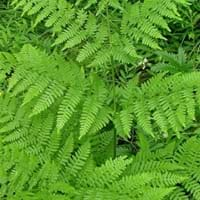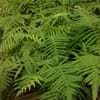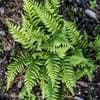Life Span
Perennial
Perennial
Origin
India, China, Japan
World, Pandemic
Types
Bigleaf hydrangea, Hortensia, Smooth hydrangea, Oakleaf hydrangea, Annabelle
Not available
Number of Varieties
Not Available
Habitat
Forest edges, Hillside, Woods
Woodland Garden
USDA Hardiness Zone
6-9
Not Available
AHS Heat Zone
9*6
Not Available
Sunset Zone
4, 5, 6, 15, 16, 17
Not Available
Habit
Clump-Forming
Thicket/Colonizing
Flower Color
Blue, Dark Purple, Light Purple, Red, White
Not Available
Flower Color Modifier
Bicolor
Bicolor
Fruit Color
Not Available
Brown
Leaf Color in Spring
Light Green, Brown
Green, Light Green
Leaf Color in Summer
Green, Brown
Green
Leaf Color in Fall
Green, Brown
Gold, Brown
Leaf Color in Winter
Light Green
Not Available
Leaf Shape
Oblovate
Strap shaped
Plant Season
Spring, Summer, Fall
Spring, Summer, Fall
Sunlight
Partial shade, Full Shade
Full Sun, Partial shade
Growth Rate
Medium
Very Fast
Type of Soil
Loam
Loam, Sand
The pH of Soil
Acidic, Neutral
Acidic, Neutral
Soil Drainage
Average
Well drained
Bloom Time
Spring, Summer
Not Available
Tolerances
Drought
Drought, Full Sun
Where to Plant?
Container, Ground
Ground
How to Plant?
Seedlings, Stem Planting
Divison, From Rhizomes, Spores
Plant Maintenance
Medium
Low
Watering Requirements
Not Available
Keep the ground moist but not water-logged, Requires a lot of watering
In Summer
Average Water
Lots of watering
In Spring
Moderate
Moderate
In Winter
Average Water
Average Water
Soil pH
Acidic, Neutral
Acidic, Neutral
Soil Type
Loam
Loam, Sand
Soil Drainage Capacity
Average
Well drained
Sun Exposure
Partial shade, Full Shade
Full Sun, Partial shade
Pruning
Remove damaged leaves, Remove dead branches, Remove dead leaves
Remove damaged leaves, Remove dead branches, Remove dead leaves
Fertilizers
All-Purpose Liquid Fertilizer
Nitrogen, Phosphorous, Potassium
Pests and Diseases
Red blotch
Caterpillars
Plant Tolerance
Drought
Drought, Full Sun
Flowers
None
Not Available
Flower Petal Number
Single
Single
Foliage Texture
Medium
Medium
Foliage Sheen
Matte
Matte
Evergreen
Semi-Evergreen
No
Attracts
Bees, Flies
Bees, Birds, Hummingbirds
Allergy
Chest tightness, Diarrhea, Dizziness, Nausea, Vomiting
Not Available
Aesthetic Uses
Not Available
Cottage Garden, Showy Purposes
Beauty Benefits
Not Available
Not Available
Edible Uses
Not Available
Yes
Environmental Uses
Air purification
Air purification
Medicinal Uses
Fever, Kidney problems, Urinary tract problems
Anthelmintic, Antiemetic, Antiseptic, Diuretic, Poultice, Tonic
Part of Plant Used
Flowers, Root
Leaves, Root
Other Uses
Not Available
Adhesive, Basketary, Repellent, Used as a dye, Used in biomass
Used As Indoor Plant
Not Available
No
Used As Outdoor Plant
Yes
Yes
Garden Design
Bog Garden, Feature Plant, Groundcover, Mixed Border, Rock Garden / Wall
Groundcover
Botanical Name
DRYOPTERIS atrata
Pteridium aquilinum
Common Name
Shaggy Shield Fern
Bracken, brake, common bracken
In Hindi
Hydrangea
bracken
In German
Hortensie
Adlerfarn
In French
Hortensia
fougère
In Spanish
Hortensia
helecho
In Portuguese
Hortênsia
samambaia
In Polish
Hortensja
orlica
In Latin
Hibiscus
bracken
Phylum
Not Available
Pteridophyta
Class
Not Available
Filicopsida
Order
Not Available
Polypodiales
Family
Dryopteridaceae
Dennstaedtiaceae
Genus
Not Available
Pteridium
Clade
Not Available
Not Available
Tribe
Not Available
Not Available
Subfamily
Not Available
Not Available
Number of Species
Not Available
Properties of Shaggy Shield Fern and Bracken
Wondering what are the properties of Shaggy Shield Fern and Bracken? We provide you with everything About Shaggy Shield Fern and Bracken. Shaggy Shield Fern doesn't have thorns and Bracken doesn't have thorns. Also Shaggy Shield Fern does not have fragrant flowers. Shaggy Shield Fern has allergic reactions like Chest tightness, Diarrhea, Dizziness, Nausea and Vomiting and Bracken has allergic reactions like Chest tightness, Diarrhea, Dizziness, Nausea and Vomiting. Compare all the properties and characteristics of these two plants. Find out which of these plant can be used as indoor plant. If you are interested to decorate your house and garden, find out aesthetic uses, compare them and select the plant which will beautify your surrounding. Along with beautification, try comparing medicinal and edible uses of Shaggy Shield Fern and Bracken and you can choose the plant having best and most benefits.
Season and Care of Shaggy Shield Fern and Bracken
Season and care of Shaggy Shield Fern and Bracken is important to know. While considering everything about Shaggy Shield Fern and Bracken Care, growing season is an essential factor. Shaggy Shield Fern season is Spring, Summer and Fall and Bracken season is Spring, Summer and Fall. The type of soil for Shaggy Shield Fern is Loam and for Bracken is Loam, Sand while the PH of soil for Shaggy Shield Fern is Acidic, Neutral and for Bracken is Acidic, Neutral.
Shaggy Shield Fern and Bracken Physical Information
Shaggy Shield Fern and Bracken physical information is very important for comparison. Shaggy Shield Fern height is 6.56 cm and width 10.50 cm whereas Bracken height is 30.00 cm and width 60.00 cm. The color specification of Shaggy Shield Fern and Bracken are as follows:
Shaggy Shield Fern flower color: Blue, Dark Purple, Light Purple, Red and White
Shaggy Shield Fern leaf color: Light Green and Brown
Bracken flower color: Not Available
- Bracken leaf color: Green and Light Green
Care of Shaggy Shield Fern and Bracken
Care of Shaggy Shield Fern and Bracken include pruning, fertilizers, watering etc. Shaggy Shield Fern pruning is done Remove damaged leaves, Remove dead branches and Remove dead leaves and Bracken pruning is done Remove damaged leaves, Remove dead branches and Remove dead leaves. In summer Shaggy Shield Fern needs Average Water and in winter, it needs Average Water. Whereas, in summer Bracken needs Lots of watering and in winter, it needs Average Water.



